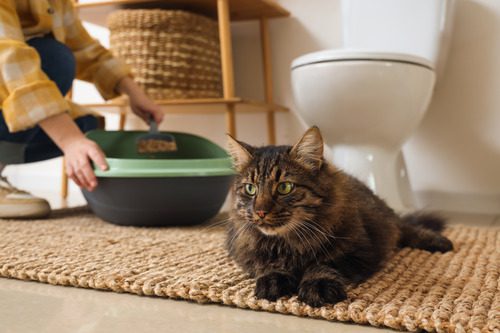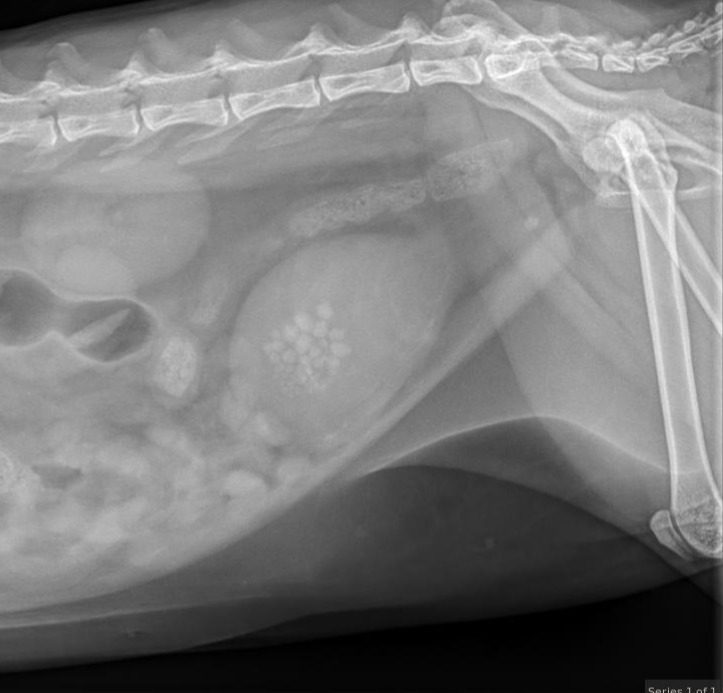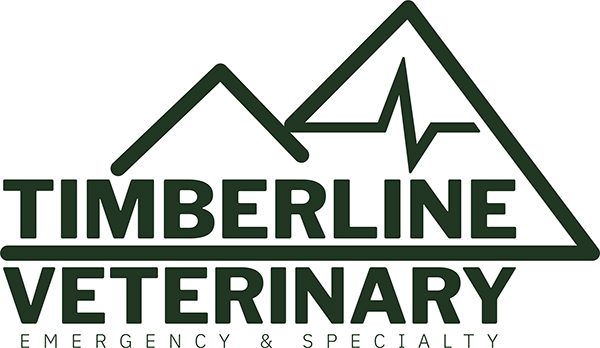Why Is My Cat Not Peeing?

When a cat is not peeing, it can be alarming. Cats are creatures of habit, and any change in their routine—especially involving their litter box—can signal an underlying problem. A cat not peeing may indicate a medical emergency that requires immediate veterinary attention. If your cat is straining to urinate, crying in pain, or avoiding the litter box entirely, these are red flags that should not be ignored. Our experienced team at Timberline Veterinary Emergency and Specialty in Seattle, WA, can help. If your cat is experiencing urinary difficulties, call us at 206-828-6868 as soon as possible.

What Are Some Common Causes of a Cat Not Peeing?
Several conditions can contribute to a cat not peeing. Some are minor, while others require immediate medical intervention. Understanding the possible causes can help you recognize when it’s time to seek veterinary care.
Urinary Tract Infections (UTIs)
A urinary tract infection can make urination painful and difficult for cats. UTIs occur when bacteria enter the urinary system, leading to inflammation and discomfort. Symptoms may include:
- Frequent trips to the litter box with little urine output
- Crying or vocalizing while trying to urinate
- Blood in the urine
- Excessive licking or overgrooming of the genital area
UTIs require a veterinary diagnosis, usually with a urinalysis, and appropriate treatment with antibiotics and sometimes pain medication to relieve discomfort and restore normal urination.
Feline Lower Urinary Tract Disease (FLUTD)
Feline Lower Urinary Tract Disease (FLUTD) is a broad term covering multiple conditions affecting a cat’s bladder and urethra. Cats with FLUTD may exhibit symptoms similar to a UTI, but have inflammation rather than infection in the bladder and thus do not need antibiotics. Contributors to this syndrome can include
- Dry food only diets
- Crystalline material in the urine
- Stress-induced inflammation
- Changes in litter or litter boxes
- Changes in the household including new pets or guests
Cats diagnosed with FLUTD often require lifestyle changes, medical management and/or diet changes to prevent recurrent issues. A urinalysis and culture is needed to differentiate this syndrome from an infection. If untreated, this condition can progress to a urinary blockage.
Bladder Stones
Bladder stones, or uroliths, are mineral deposits that form in the bladder. These stones can range in size and may partially or fully block the urinary tract. Cats with bladder stones often experience discomfort, and symptoms may include:
- Straining to urinate
- Blood in the urine
- Frequent urination with little output
- Inability to urinate

The emergency vets at Timberline Veterinary Emergency and Specialty can diagnose bladder stones through imaging and recommend the best course of treatment, which may include dietary changes or surgical removal.
Urethral Obstruction (Blocked cat)
If a cat is not peeing at all, it may be a urethral obstruction. This condition occurs when the urethra becomes blocked from infection, crystalline material or stones preventing urine from leaving the body. Male cats are at higher risk due to their narrower urethra. Signs of a urethral obstruction include:
- Straining with no urine output
- Lethargy and weakness
- Vomiting
- Abdominal pain and swelling
A urethral obstruction is a life-threatening emergency. If your cat is not able to urinate, contact Timberline Veterinary Emergency and Specialty at 206-828-6868 immediately for urgent care.
How to Prevent Urinary Issues in Cats
While some urinary conditions develop unexpectedly, certain preventive measures can support your cat’s urinary health and reduce the risk of problems.
Hydration and Diet
Proper hydration is essential for urinary health. Encourage your cat to drink more water by providing fresh water daily, using a cat water fountain, and feeding wet food instead of only dry kibble. At Timberline, we recommend feeding your cat a diet made by a company that has a veterinary nutritionist on staff.
Litter Box Maintenance
A clean and accessible litter box encourages regular urination. Best practices for litter box care include scooping daily, using unscented, fine-grain litter, and having at least one litter box per cat in multi-cat households.
Reducing Stress
Since stress can contribute to urinary problems, creating a calm environment is beneficial. Strategies include providing vertical space for climbing ideally near a window, engaging in daily interactive play, and using pheromone diffusers. Minimizing household stressors can go a long way in maintaining a cat’s urinary health.
Signs Your Cat Needs Immediate Veterinary Care
Cats who are straining to urinate should be seen quickly. A cat not peeing for more than 12 hours requires urgent medical attention. Some signs that indicate a critical situation include:
- No urine output despite repeated attempts
- Distended or firm abdomen
- Crying or vocalizing in pain
- Sudden lethargy
- Vomiting while trying to urinate
If you notice any of these symptoms, seek emergency veterinary care right away. At Timberline Veterinary Emergency and Specialty, we can provide expert care for cats experiencing urinary distress. Call 206-828-6868 for immediate assistance.
Recent Posts
About Us
Timberline Veterinary Emergency & Specialty is a locally owned, veterinarian-led hospital founded in 2023 by Dr. Laura Ahlgrim, Dr. Beth Davidow, and Dr. Chris Bailey. As Seattle residents, we understand that pets are family—and when emergencies arise, you need care you can trust. Our mission is to provide exceptional emergency and specialty services with compassion, transparency, and medical excellence. We're here to support your pet’s health while fostering a stronger, kinder veterinary community.
